How to Grow Lanzones: Your Guide to Growing This Exotic Fruit
- March 29, 2024
- 1 comment
Learn how to grow Lanzones, or Lansium domesticum, a Southeast Asian native fruit known for its sweet-tart flavor. This guide covers the cultivation process of this tropical fruit, valued not only for its taste but also for its medicinal benefits, providing a step-by-step journey from planting to harvest for enthusiasts of exotic gardening.

Lanzones Benefits
| Benefit | Description |
|---|---|
| Rich in Antioxidants | Lanzones are packed with antioxidants, which help in fighting free radicals in the body, potentially reducing the risk of chronic diseases. |
| High in Vitamin C | A great source of Vitamin C, essential for immune system support and skin health. |
| Fiber Content | Contains dietary fiber, which aids in digestion and promotes a healthy gut. |
| Low in Calories | Lanzones are low in calories, making them a healthy snack option for weight management. |
| Natural Anti-Inflammatory | The fruit has anti-inflammatory properties, which can help in reducing inflammation-related ailments. |
| Supports Heart Health | The nutrients in lanzones can contribute to heart health by supporting blood flow and reducing cholesterol levels. |
| Good for Skin | Vitamin C and antioxidants in lanzones contribute to healthy, glowing skin. |
| Energy Boosting | Provides a quick source of natural sugars, offering an energy boost. |
| Anti-parasitic Properties | The seeds of lanzones have been traditionally used for their anti-parasitic properties. |
| Bone Health | Contains essential nutrients like calcium and phosphorus, which are vital for maintaining bone strength and health. |
Understanding the Lanzones
Before embarking on your lanzones journey, it’s essential to understand the plant. Lanzones trees are medium-sized, reaching up to 30 feet in height. They prefer a tropical climate, high humidity, and well-drained, fertile soil. They are known for their long gestation period, often taking several years to bear fruit.
Origin and Habitat
- Origin: Lanzones are native to Southeast Asia, particularly found in countries like Malaysia, Indonesia, and the Philippines.
- Natural Habitat: They grow naturally in rainforest climates, indicating their preference for high humidity and consistently warm conditions.
Tree Characteristics
- Size and Structure: Lanzones trees are typically medium in height, reaching up to about 30 feet. They have a rounded crown and a straight trunk.
- Leaves: The leaves are pinnate, with five to seven leaflets, and are glossy, dark green in color.
- Flowers: The tree produces small, white or pale-yellow flowers. These are typically found in clusters and have a sweet, fragrant aroma.
Fruit Details
- Appearance: The fruit of the lanzones is small, oval-shaped, and typically measures 2 to 5 centimeters in diameter.
- Skin: The thin, leathery skin ranges from yellow to light brown when ripe, and is typically easy to peel.
- Pulp: Inside, the fruit has a translucent, juicy pulp divided into five segments, similar to citrus fruits. The texture is both tender and chewy.
- Taste: Lanzones are known for their unique sweet and tart flavor, which is a delightful blend of citrus and grape-like notes.
- Seeds: Each segment may contain a bitter seed, which is not typically eaten.
Growth Requirements
- Climate: The ideal climate for lanzones is tropical, with high humidity and consistent temperatures between 75°F to 90°F (24°C to 32°C).
- Soil: They thrive best in rich, well-drained loamy soils. The pH of the soil should ideally be mildly acidic to neutral.
- Watering: Regular watering is essential to keep the soil moist, but care should be taken to avoid waterlogging, which can lead to root rot.
Cultivation Challenges
- Gestation Period: One of the key challenges in growing lanzones is the long waiting period for fruit production. It can take several years, often up to 12 years, for the trees to start bearing fruit.
- Pests and Diseases: They can be susceptible to various pests and diseases, which need to be managed carefully to ensure the health of the tree.
Usage and Significance
- Culinary Uses: The fruit is popularly eaten fresh and is also used in salads, desserts, and jams.
- Medicinal Properties: Traditionally, different parts of the plant have been used in herbal medicines in its native regions.
Seed Selection and Germination
Selecting Seeds

- Source: It’s crucial to obtain seeds from healthy, ripe lanzones fruits. The ripeness of the fruit is a good indicator of the seed’s readiness for germination.
- Freshness: Freshness is key with lanzones seeds. They rapidly lose their viability, meaning they should be planted as soon as possible after being extracted from the fruit. Delaying the planting can significantly reduce the chances of successful germination.
- Quality: Look for seeds that are robust and free from any signs of damage or disease. Healthy seeds have a higher germination rate.
Germination Process
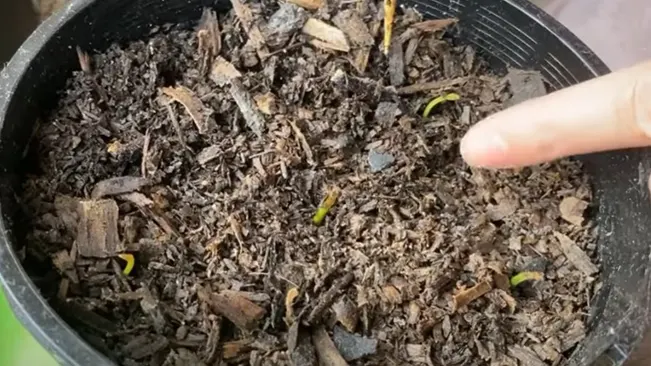
- Preparation: Start by soaking the seeds in water for about 24 hours. This soaking helps to soften the outer layer of the seeds, making it easier for the embryo to break through during germination.
- Soil Mix: Choose a soil mix that is fertile and well-draining. The soil should be light enough to allow for good air circulation, yet capable of retaining enough moisture to keep the seeds hydrated.
- Planting Depth: When planting the seeds, ensure they are only lightly covered with soil. A thin layer of soil is sufficient to provide the darkness needed for germination while still allowing the sprout to emerge easily.
- Moisture: Consistent moisture is vital. The soil should be kept moist but not waterlogged. Over-watering can lead to rot, while under-watering can cause the seeds to dry out. A balance is essential.
- Warmth and Light: While the seeds do not need light to germinate, they do need warmth. A consistent, warm temperature will aid in the germination process. Once sprouts appear, they should be exposed to light to encourage healthy growth.
- Germination Time: Expect germination to occur within a few weeks, although this can vary depending on environmental conditions and the freshness of the seeds.
Post-Germination Care
- Thinning: If more than one seed sprouts in a single pot, you may need to thin them. This process involves removing weaker seedlings to allow the stronger ones to grow without competition.
- Transplanting: Once the seedlings have grown sufficiently and are sturdy enough, they can be transplanted to their final growing location or into larger pots.
Ideal Planting Conditions
Climate
- Humidity: Lanzones trees require high humidity to thrive. This is typical of their native Southeast Asian environment. High humidity levels help in the proper development of fruits and overall health of the tree.
- Temperature Range: They prefer a temperature range of 75°F to 90°F (24°C to 32°C). This range provides the warmth needed for optimal growth and fruit production. Temperatures outside this range, especially cold temperatures, can hinder growth or even damage the tree.
- Tropical Environment: Lanzones are inherently tropical plants and do not fare well in temperate zones. They need the consistent warmth and sunlight found in tropical climates, and they are not frost-tolerant.
Soil
- Type: Rich, loamy soil is ideal for Lanzones. This type of soil typically contains a balance of sand, silt, and clay, providing good drainage and adequate nutrients.
- Drainage: Good drainage is crucial. Lanzones do not tolerate waterlogged conditions, which can lead to root rot. While the soil should retain moisture, it should also allow excess water to drain away efficiently.
- Soil pH: The preferred soil pH level is slightly acidic to neutral, between 5.5 and 6.5. If the soil is too alkaline, it might require amendments to bring it within the optimal range. Regular soil testing can help maintain the right pH levels.
Location
- Wind Protection: While Lanzones trees need exposure to sunlight, they should be shielded from strong winds. Winds can damage the branches and foliage, disrupt pollination, and affect fruit development.
- Sunlight Exposure: Ample sunlight is vital for the health of the Lanzones tree. It should receive several hours of sunlight daily. However, in areas with very intense sun, some afternoon shade might be beneficial to prevent overheating or scorching.
- Spacing: When planting multiple Lanzones trees, adequate space between them is essential to ensure good air circulation and sunlight penetration. This spacing also facilitates easier maintenance and harvesting.
Planting and Care
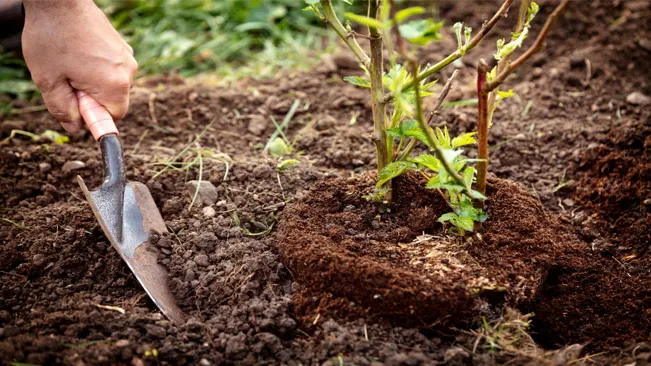
Planting
- Site Selection: Choose a planting location where the tree will receive sufficient sunlight but is shielded from harsh, direct afternoon sun. The site should also protect the tree from strong winds.
- Soil Preparation: If planting in the ground, prepare the soil by tilling and amending it with organic matter to improve fertility and drainage. Lanzones prefer rich, loamy soil.
- Spacing: When planting multiple lanzones trees, leave ample space between them, as they can grow quite large. A spacing of about 30 feet between trees is recommended to allow for proper root and canopy expansion.
- Depth and Method: Plant the saplings at the same depth as they were in their nursery containers. Firm the soil around the roots to eliminate air pockets. Water thoroughly after planting to settle the soil.
Watering
- Regular Schedule: Establish a regular watering schedule to keep the soil consistently moist, especially during the tree’s early years and in dry periods.
- Avoid Overwatering: Be careful not to overwater, as lanzones do not tolerate waterlogged conditions. Well-draining soil is crucial to prevent root rot.
- Monitoring: The frequency of watering will depend on your local climate and soil type. In very hot and dry climates, more frequent watering may be necessary.
Fertilizing
- Type of Fertilizer: A balanced, slow-release fertilizer is ideal for lanzones trees. You can also use organic compost to add nutrients to the soil.
- Application: Apply fertilizer around the base of the tree, avoiding direct contact with the trunk. Follow the instructions for the specific fertilizer you are using for the best results.
- Frequency: Fertilize during the growing season, typically in spring and summer. Young trees benefit from more frequent fertilization, while established trees can be fertilized less often.
Pruning
- Best Time to Prune: The best time to prune lanzones trees is during the dormant season or just before the growing season begins.
- Objective: Pruning aims to remove dead or diseased branches, improve air circulation, and allow sunlight to penetrate the canopy. It also encourages the growth of new, healthy branches.
- Technique: Use clean, sharp pruning tools. Make cuts at a 45-degree angle, away from the bud or branch collar, to promote healthy regrowth.
- Moderation: Do not over-prune, as this can stress the tree. Typically, removing about 10-20% of the canopy annually is sufficient.
Pest and Disease Management
Lanzones trees can be susceptible to pests like aphids and diseases like root rot. Regular inspection and natural or chemical treatments can be employed to tackle these issues.
Pest and Disease Management for Lanzones Trees
- Aphids
- Description: Aphids are small, sap-sucking insects that can infest lanzones trees, causing leaf curling and stunted growth.
- Management: Use a strong water jet to dislodge aphids or apply insecticidal soap. Neem oil is also effective as an organic treatment. Encourage natural predators like ladybugs in your garden.
- Root Rot
- Description: Root rot is a disease caused by overwatering or poor drainage, leading to decay of the roots.
- Management: Ensure good soil drainage and avoid overwatering. If root rot is detected, remove affected parts of the root and replant in fresh, well-drained soil. Fungicides can be applied as a preventive measure.
- Mealybugs
- Description: These are small, white insects that produce a waxy coating, feeding on plant sap and weakening the tree.
- Management: Remove them manually using a cloth dipped in alcohol, or apply insecticidal soap. Natural predators like lacewings can also help control mealybug populations.
- Fruit Flies
- Description: Fruit flies lay eggs on ripening fruits, and the larvae feed on the fruit, causing spoilage.
- Management: Use fruit fly traps or bags to cover fruits. Ensure good garden hygiene by removing any fallen or spoiled fruits promptly.
- Fungal Diseases
- Description: Fungal infections can cause leaf spots, fruit rot, and blight.
- Management: Apply fungicides as a preventive measure during humid or rainy seasons. Prune any infected branches to prevent the spread of the disease.
- Mites
- Description: Mites are tiny arachnids that can cause discoloration and mottling of leaves.
- Management: Use miticides or neem oil treatments. Regular monitoring and maintaining a healthy tree can prevent severe infestations.
- Scale Insects
- Description: Scale insects are small, hard-bodied pests that attach themselves to stems and leaves, causing yellowing and dropping of leaves.
- Management: Scrape off scales with a brush or apply horticultural oil. Predatory insects like ladybugs can also be effective.
Harvesting
Lanzones, also known as langsat, is a delicate fruit requiring careful handling during the harvest. The fruit grows in clusters, similar to grapes, and the timing of the harvest is crucial to ensure the best quality and taste.
Identifying the Right Time for Harvest
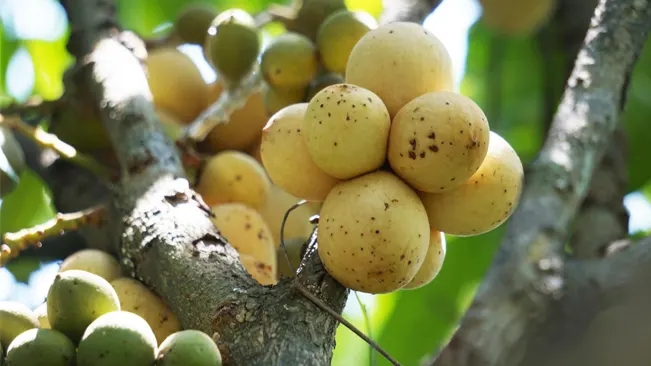
- Color Change: The primary indicator for harvest readiness is the color of the fruit. Lanzones transitions from green to a pale yellow or light brown color when ripe.
- Texture and Firmness: Gently squeezing the fruit can also indicate ripeness. Ripe lanzones will have a slightly softer feel without being mushy.
Harvesting Technique

- Hand Picking: Due to their delicate nature, lanzones are typically harvested by hand. This method helps in reducing damage to the fruit and the tree.
- Cluster Harvesting: It’s common to pick the entire cluster of fruit rather than individual lanzones. This approach is more efficient and minimizes damage to the fruit.
- Gentle Handling: Careful handling is crucial to prevent bruising. Lanzones bruise easily, which can affect their shelf life and marketability.
Post-Harvest Handling
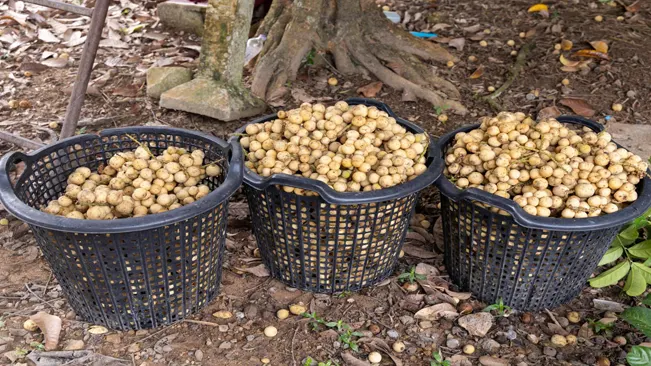
- Immediate Cooling: To prolong shelf life, it is advisable to cool the lanzones as soon as possible after harvesting.
- Storage: Store in a cool, dry place. Refrigeration can extend their freshness, but they should be consumed relatively quickly as they do not have a long shelf life.
- Transportation: If transporting, cushioning materials are often used to protect the fruit from bumps and bruises.
Challenges in Harvesting
- Timing: The biggest challenge in harvesting lanzones is determining the optimal time. Harvesting too early can lead to sour fruits, while too late can result in over-ripening.
- Weather Dependence: The quality of the harvest can be significantly affected by weather conditions. Excessive rain or drought can impact the ripening process.
Conclusion
Growing lanzones is a test of patience and commitment but yields highly rewarding results. By following these steps and providing the right care and environment, you can enjoy the unique taste of home-grown lanzones right from your garden.
FAQs (Frequently Asked Questions)
- What is a Lanzones?
Lanzones, also known as langsat or Lansium domesticum, is a tropical fruit tree native to Southeast Asia. It produces small, round, edible fruits with a sweet-tart taste. - Where do Lanzones trees grow best?
They thrive in tropical climates with high humidity. The ideal temperature range is between 75°F to 90°F, in areas with well-drained, fertile soil and a pH level between 5.5 and 6.5. - How do you germinate Lanzones seeds?
Soak the seeds in water for 24 hours and then plant them in a moist soil mix. Germination usually takes a few weeks. Keep the soil consistently moist during this period. - How long does it take for a Lanzones tree to bear fruit?
Lanzones trees can take several years to bear fruit, often up to 12 years. Patience is essential when growing this tree. - How much sunlight do Lanzones trees need?
They require ample sunlight but should be protected from strong, direct afternoon sun. A location that receives partial shade, especially in the hottest part of the day, is ideal. - How often should I water my Lanzones tree?
Regular watering is necessary to keep the soil moist, but avoid waterlogging. The frequency of watering will depend on your climate and soil type. - Do Lanzones trees need fertilization?
Yes, they benefit from regular fertilization. Use a balanced fertilizer or organic compost to nourish the trees, especially during the growing season. - How do you prune a Lanzones tree?
Prune to remove any dead or diseased branches and to shape the tree. Pruning helps encourage growth and can improve fruit production in the long run. - What are common pests and diseases that affect Lanzones trees?
They can be susceptible to pests like aphids and diseases such as root rot. Regular monitoring and appropriate treatments are necessary to manage these issues. - When and how are Lanzones fruits harvested?
Harvest the fruits when they turn a pale yellow color. They are usually harvested by hand and should be handled with care to prevent bruising.

Kristine Moore
Forestry AuthorI'm Kristine Moore, a seasoned garden landscaping professional with over 30 years of experience. My extensive career has been dedicated to transforming outdoor spaces into stunning, sustainable landscapes. With a deep understanding of horticulture, design principles, and environmental stewardship, I have become a respected figure in the field, known for creating harmonious, visually appealing, and eco-friendly gardens. My commitment to excellence and continuous learning in landscaping trends and techniques has solidified my reputation as an expert in garden design and implementation.

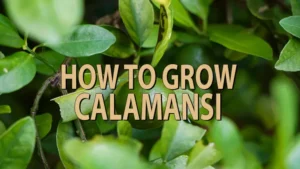

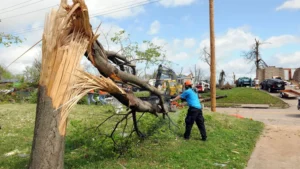

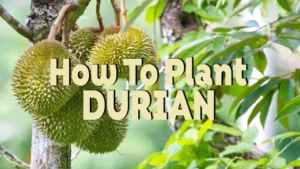







What kind of plants can be planted with lanzones trees? Thank you
Thelma Luna
May 28, 2024 9:18 pm